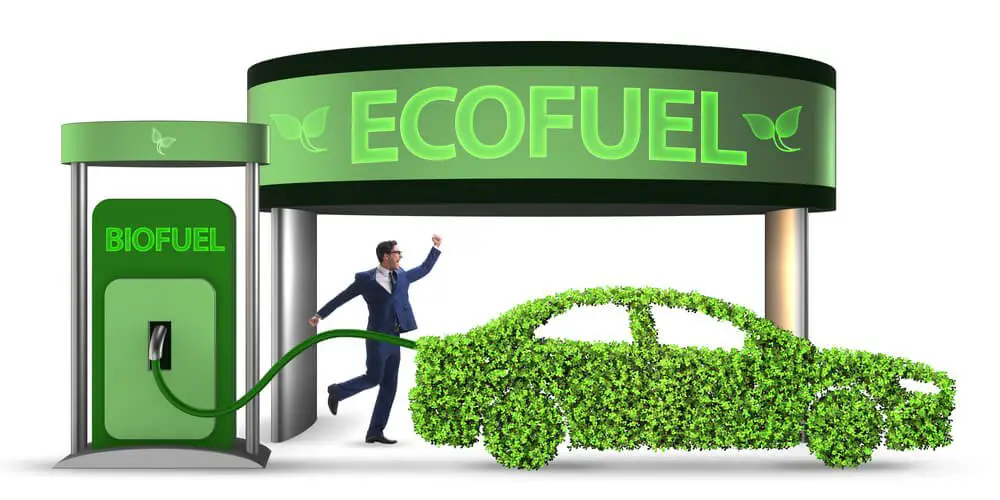Other than global warming, National Geographic states that air pollution killed more than 4.2 million people in 2016.
To mitigate the deadly effects of air pollution, scientists developed less toxic biofuels and biodiesel.
Biofuels are any fuels sourced from organic matter, plants such as algae and animal wastes.
This environment-friendly fuel came into existence in the 1930s through Rudolf Diesel’s engine. But, the idea of biofuels was marketed by Nikolaus August Otto, who some people are convinced is its inventor.
Having said that, what is the difference between biofuel and biodiesel? Let us get started.
What Are They?
While biofuel is easy to understand, most people tend to confuse it with biodiesel.
Biodiesel is a type of biofuel produced from plant-based oils used as diesel or petrol alternatives in engines.
Biodiesel was invented by G. Chavanne in 1937 when the car industry was booming.
Biodiesel is a vegetable-based oil that is used as a diesel or petrol alternative.
Sometimes, people mix biodiesel with conventional diesel and petrol in certain percentages or ratios according to engine requirements.
Biofuel is an umbrella of terms that are used to define all types of fuel originating from living things and organic matter. Mainly, plants and animal waste products produce biofuels.
Thus different types of biodiesel are biofuels.
Raw materials are used to process them.
As we have already stated, biodiesel is derived from plant-based oils such as;
- Soya oil
- Rapeseed oil
- sunflower oil
- palm oil
- Canola oil
Being a universal term describing different types of fuels sourced from living things, biofuels are produced by both plants and animals.
Plants such as;
- Algae
- Sugarcane
- Sugarbeet
- Corn
In recent days, we have also seen animal wastes produce energy in modern biodigester units.
Generally, biofuels can be obtained from any form of organic matter, plant and animal remains, and consumable products produced by either plants or animals, such as cooking oil.
Forms of existence
Perhaps you guessed it right; biodiesel exists only in liquid form. Its existence in liquid forms earns biodiesel’s sole purpose of powering engines, especially locomotive engines, and heating.
Biofuel, on the other hand, exists in all states of matter.
In a gaseous state, biofuel is used in cooking, and an example is methane found in biogas.
Liquid forms of biofuel are widely used in transport. Example of liquid biofuels includes;
- Ethanol
- Alcohol
- All types of biodiesel
Though there are very few types of biofuels existing in solid form, those present are used in cooking and are a mixture of plant remains such as maize cobs.
The most notable example of commercially used biofuel in solid form is briquette.
Briquettes are compressed plant remains such as coal dust, sawdust, or combustible biomass materials used in heating and cooking.
More examples of solid biofuels;
- Wood pellets
- Wood residue
- Animal wastes
- Peat
Functions
Biodiesel functions stem from how it is produced, enhanced, and supplied.
Biodiesel is produced to power the engines and is supplied in liquid form.
Thus during its processing, it was enhanced with an additive to function better than traditional diesel.
Here is how biodiesel is enhanced;
- It is more slippery for higher lubricity
- It does not contain sulfur, major air pollutants caused by diesel
- It has more oxygen atoms for easy combustibility and reduced pollution
- Biodiesel oxidizes quickly, forming a long-lasting gel-like mass of fuel
- It contains less toxic chemicals like lead
In contrast, the functions of biofuels cut across every aspect of life, from transportation to cooking. It is mainly used in;
- Heating
- Energy creation
- Cleaning oil spills
- Removing oil-based paints
- Replacing nonrenewable petroleum fuels
Why is biodiesel a biofuel?
When we talk of the direct relationship between biodiesel and biofuel, we see a similar trait repeating in their characteristics, nature of production, uses, and even their forms of existence. Typically, biodiesel is a type of biofuel in;
How it is produced Biodiesel comes from plant and animal oils.
These (oils) are also one of many sources of biofuel. So with this relationship, there is no doubt biodiesel is a biofuel.
- Biodiesel is one of the types of biofuels.
This is the telltale sign that biodiesel is a type of biofuel since in the many types of biofuels, biodiesel is one of them that is primarily in the transport sector.
- Renewability
All biofuels are renewable, so are biodiesel.
- Key characteristics
Biodiesel is non-toxic and biodegradable. These are the main characteristics enveloping all biofuels together, making biodiesel one of them.
- Aims
Biofuels’ long-standing objective is to reduce pollution. These objectives, too, are being replicated by biodiesel, qualifying it as a biofuel.
Are biofuel and biodiesel the same?
Biodiesel and biofuel are not the same, but they share countless similarities.
In our definition for biodiesel, we stated that it is a renewable source of energy used to power locomotives.
However, when defining biofuels, we noted that it was an umbrella of terms representing biodiesel, ethanol, methane, and any other fuel produced from living things.
Is biofuel better than ethanol?
Finding the correct answer to this question is a bit tricky basing on the fact that ethanol is a type of biofuel.
But if we go on ahead to head showdown, the general community of biofuels is better than ethanol as a distinct source of energy.
Here are the main differences;
- Biofuels such as biodiesel produce more energy
Ethanol releases less energy compared to most biofuels like biodiesel.
Most ethanol fuels produce 20 to 25% less energy compared to biodiesel.
- Most biofuels are environmentally safe compared to ethanol.
Conclusion
Biofuels are revolutionary sources of energy set to reduce global pollution. They can be in the gaseous, liquid, or solid state.
In the gaseous state, biofuels exist as methane, while in the liquid and solid state, it occurs as biodiesel and briquette, respectively.
We have also hosted a match between biofuels and biodiesels, stated their similarities, and concluded that biodiesel is a member of the large community of biofuels.
Furthermore, we have looked at ethanol and compared it with biofuels. They, too, have shared properties.






